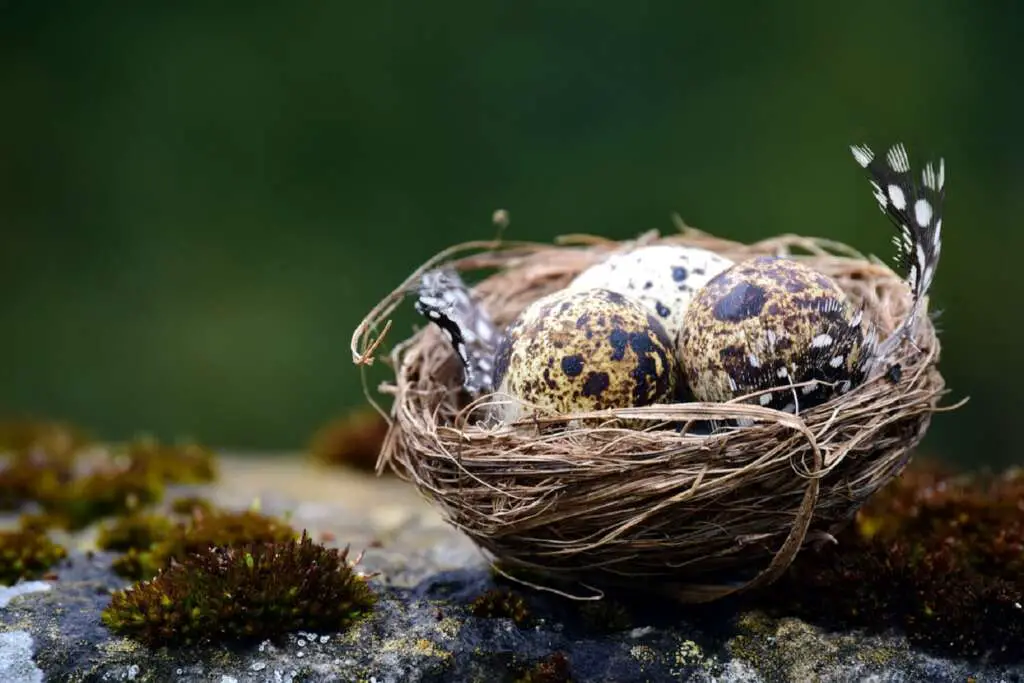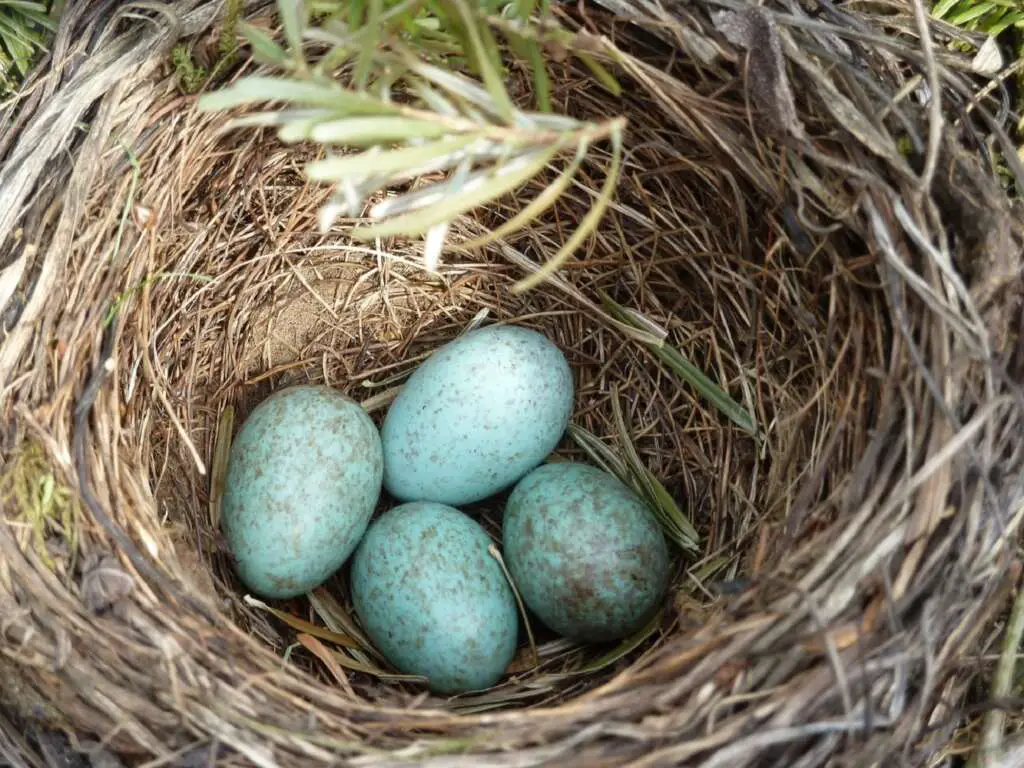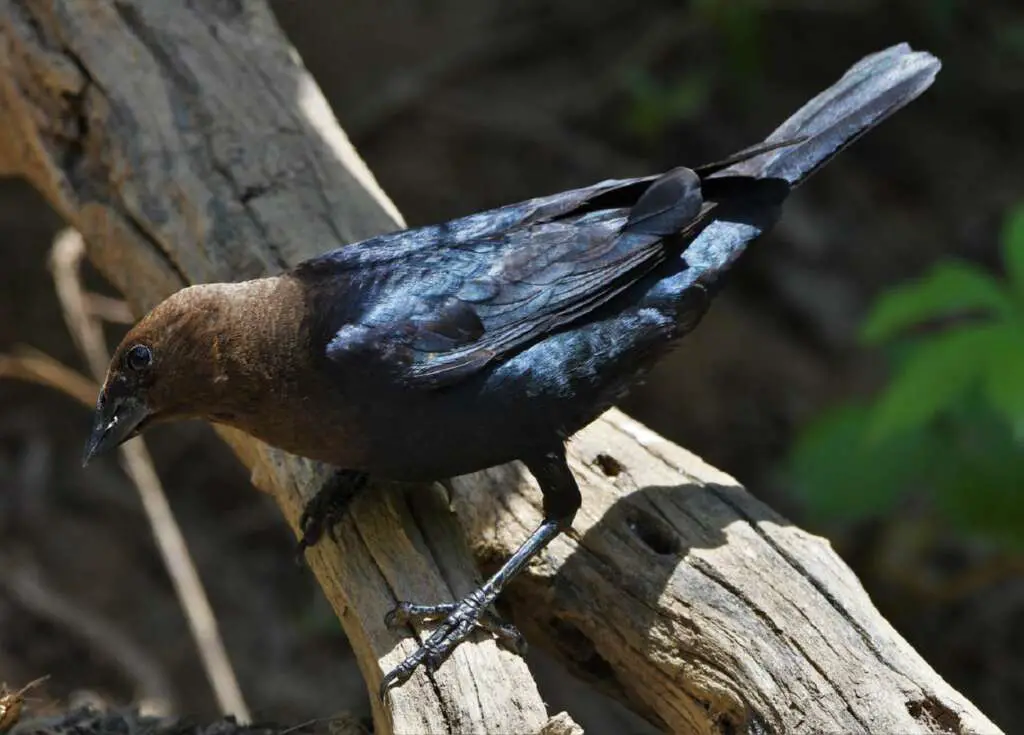I Found a Bird Nest with Different Colored Eggs
Bird eggs’ shells are made of calcium carbonate, and different bird species usually lay eggs with different colors. The color of the egg also depends upon the cuticle (the egg’s outer coating).
It’s not uncommon to find a bird nest with different colored eggs. Let’s discuss why it happens and what you should do if you find a bird nest containing eggs of different colors.
Why Do Some Bird Nests Have Different Colored Eggs?

Most bird species take care of their eggs and take every possible step to protect them. Male birds usually search for food, and females sit on their eggs for several weeks.
However, some bird species don’t follow this approach. They rely on other bird species to raise their hatchlings. Such bird species are called brood parasites as they lay their eggs in other birds’ nests.
The following are some common brood parasites.
- Common cuckoo
- Black-headed duck
- Honeyguide
- Indigobird
- Brown-headed cowbird
Do Any Birds Lay Different Color Eggs?

Interestingly, some bird species are capable of laying eggs in different colors. You can find a nest with pink, brick-red, teal, turquoise, tan, and white eggs of different hues. Even the coating and the texture of the same bird species’ eggs can differ.
You can find eggs of the same bird species that are smooth, while others will be bumpy; some will be shiny and others dull.
These patterns and colors not only strengthen the eggshells but also work as camouflage. Many bird species such as flycatchers and thrushes lay multiple eggs, and they can have different colors even during the same nesting season.
Doctor Mark Hauber, the writer of “The Book of Eggs,” says that these birds can lay eggs with different colors throughout their laying cycle. He also says that the patterns and eggshell colors can change within the same bird species over time.
For example, the Japanese Quail that lay eggs with beige color can start laying plain blue eggs with just a couple of mutations.
Related post: How to Identify American Robin Eggs
Why Do Birds Lay Eggs with Different Colors?

Scientists are still studying this subject, and there is no confirmed reason why it happens. Some studies such as Nature Ecology and Evolution suggest that birds usually lay eggs with darker colors in colder environments because they allow eggs to absorb more heat.
The same bird species lay eggs with light colors in tropical and sub-tropical regions. A study, where scientists observed eggs of 634 different species suggests that eggs with darker colors are usually found in places with lower solar intensity.
Places with a higher temperature usually have eggs with lighter colors. However, there are some exceptional cases where a bird can lay eggs with different colors during the same nesting season in the same place.
Therefore, it’s possible to find a bird nest with eggs of different colors, and all the eggs belong to the same bird species. Let’s discuss whether it is okay to remove the different colored eggs from a bird’s nest.
This might pique your interest too: All About Baby Crows!
Is It Ok to Remove the Different Color Egg from the Nest?

As mentioned earlier, brood parasites are the most common reason birders find nests with different colored eggs. It means that an egg in a nest with entirely different colors and patterns belongs to a different bird species.
For example, if you live in North America, you can find a host nest with one or more cowbird eggs. Brood parasites, including cowbirds, are usually vilified because of a perceived sense of injustice.
That’s why some people plan to remove their eggs from the host nest by taking the matter into their own hands. These well-intentioned attempts are made to save the hatchlings of host species. However, doing so isn’t advisable.
According to Emeritus Professor of Zoology, Steve Rothstein from the University of California, leaving the nest with different colored eggs alone is the best solution. He says that it is a natural process, and no one should attach human values to the natural world.
Why Should You Not Remove the Different Colored Egg from the Nest?
Some bird species, such as cowbirds, are protected by US Law. Removing the eggs of these birds from any nest is a crime. The law clearly states that no one should interfere with the eggs of endangered bird species, including cowbirds.
However, the law is not the only reason no one should leave bird nests with different colors alone. Human interference can also cause other devastating consequences for the host birds.
Potential Consequences of Removing Eggs with A Different Color
Most bird species that live in North America don’t possess abilities to recognize foreign eggs. Some birds can even recognize their own. However, most bird species can count the total number of their eggs, and they also keep track of that.
That’s why most brood parasites, including cowbirds, destroy one or more eggs from the host nest before laying their own. Most bird species don’t recognize that and assume that the foreign egg is part of their clutch.
Nest-Desertion
If you remove one or more different colored eggs from their nest, the parent birds can have a nest desertion response. They may abandon their nest with eggs and find a new spot to build a new nest and lay eggs again.
This nest-desertion response is universal because birds can always re-nest. However, many birds won’t build a new nest if it happens late in the nesting season as they won’t have enough time.
Retribution by Brood Parasites
Brood parasites can also have a retribution response if you remove their eggs from a host nest. According to a study conducted by Jeffrey Hoover, an avian ecologist, with the collaboration of Natural History Survey (Illinois), describes the mafia behavior in birds.
In that study, scientists observed the behavior of cowbirds by removing their eggs from warbler nests. Interestingly, in over 55 percent of cases, the female cowbirds returned to the host nest and destroyed it completely along with the other eggs.